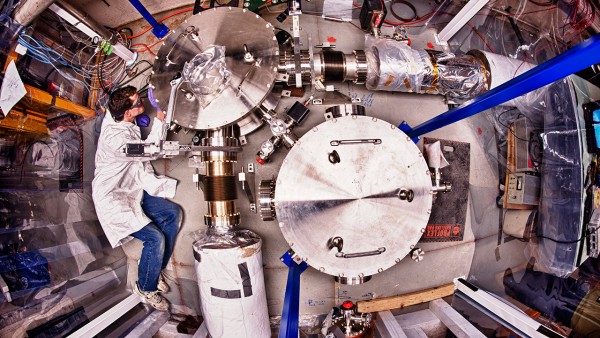MI weekly selection #158

Universe isn’t a hologram, experiment determines
A controversial experiment at the Fermi National Accelerator Laboratory has found no evidence supporting the theory that the universe is a giant hologram. The Holometer searched for a kind of holographic noise using interferometers, but nothing has been detected.
Sonic tractor beam developed
A tractor beam that lifts and moves objects with sound waves has been developed by researchers in the UK. The device uses 64 tiny loudspeakers to create an acoustic hologram with high-intensity sound that manipulates small. The researchers think the device may one day be used in many applications, particularly in zero-gravity environments like those in the International Space Station or underwater.
Magnetic fields surrounding Milky Way’s black hole detected
Predicted magnetic fields just beyond the event horizon of the supermassive black hole at the centre of the Milky Way have been detected for the first time by researchers using the Event Horizon Telescope. The magnetic fields are chaotic in some areas and orderly in others.
A detailed look at penguin huddles
Penguins are known to huddle together for warmth, but a single penguin can cause the huddle to quickly disperse.Huddles help penguins conserve heat, and when a bird reaches a temperature that’s too warm to tolerate, it leaves the huddle, usually from deep in the center where it’s the warmest, and causes the huddle to break up. Researchers studying a penguin colony at the Pointe Geologie Archipelago in Antarctica observed huddles in detail, noting that some can last for hours while others last barely more than 10 minutes.
Cuttlefish hide from predators by reducing their electrical fields
Cuttlefish stop moving to mask their electrical fields when they sense predators approaching. Researchers placed cuttlefish in clear tanks, then projected various predators approaching to record the cuttlefish’s bioelectric response, which dropped to about 6 microvolts from 10-30. Sharks, the cuttlefish’s main predator, can sense faint electrical fields, so cuttlefish can protect themselves by freezing up and reducing their electric fields.